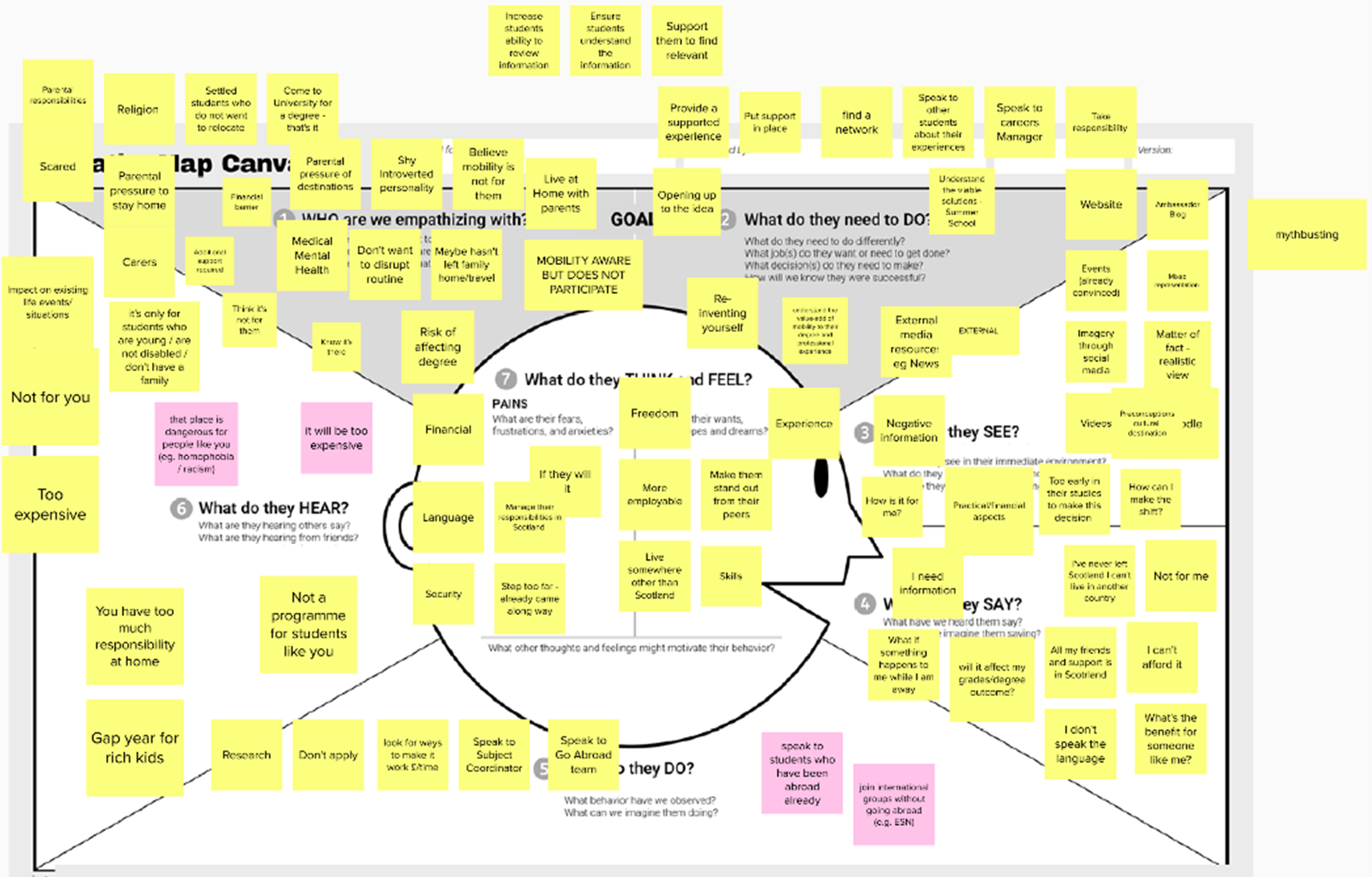
Creating an empathy map
Empathy maps will help you develop a deeper understanding of the people you are designing for.
An empathy map is a simple visual that captures user’s behaviours and attitudes. It is a useful tool to helps teams better understand their users. They are best used from the very beginning of the design process.
The empathy mapping process helps distil and categorise your knowledge of a user into one place. It helps to categorise and make sense of qualitative research and discover gaps in your current knowledge for further research.
Empathy maps provide a foundation for a user persona.
Key components of an empathy map
A basic empathy map is split into 4 sections [Says, Thinks, Does and Feels] with the user in the middle.
Says (ideally it containts direct quotes from research)
- What do they say?
- What do they tell others?
- Where do they say it?
Thinks (consider positive and negative thoughts)
- What is the user thinking throughout the experience?
- What matters to them?
Does
- What are their behaviours?
- What is their attitude?
Feels
- What is the user’s emotional state?
- How does the user feel about the experience?
- What worries or excites them?
You can adapt the empathy map to include sections such as:
Tasks
- What tasks is the user trying to complete?
- What questions do they need answered?
Influences
- What people, things or places may influence how the user acts?
Pain points
- What pain points might the user be experiencing that they hope to overcome?
Gain points
- What works well?
- What makes them happy?
An example of an Empathy Map used for a project with the Global Opportunities team:

Template created by Dave Gray.
You can access a free Empathy Map template from Mural to use with your team or users.
Step-by-step guidance
1. Define scope
What user will you map?
If you have multiple users, there should be an empathy map for each.
What is your primary purpose for empathy mapping?
Examples:
- Aligning the team on your user
- Collecting data directly from the users
Aligning the team on your user
Be sure everyone is present during the empathy mapping activity.
2. Gather the user research data
Empathy mapping is a qualitative method, so you will need qualitative inputs, e.g. user interviews, diary studies or qualitative surveys.
The empathy map you create will organise the raw information from the research and turn them into insights your team can use when designing.
Collecting data directly from the user
2. Setting an objective - what do you want to know?
Examples:
- Are participants completing a task and sharing their feedback, e.g. testing a prototype checklist?
- Are participants sharing their experience of a process, e.g. registration and enrolment
3. Individual mapping
Give each participant their own coloured post-it notes. It will make it easier to attribute and understand who said what. Ask each participant to fill them with notes that align to the sections in the Empathy Map template [Says, Thinks, Does and Feels]. This will be from their own experience, or from their understanding of the user research data. Next, they add their post-it notes to an empathy map drawn on a whiteboard/flipchart.
4. Collaborative affinity mapping
Participants move through the post-it notes on the boards and clusters similar notes that belong to the same section. Giving these clusters themes. This activity will facilitate discussion and alignment, resulting in a shared understanding of your user by all participants.
5. Share the output
By digitising the output you are able to share with stakeholders and reference throughout the design process.

